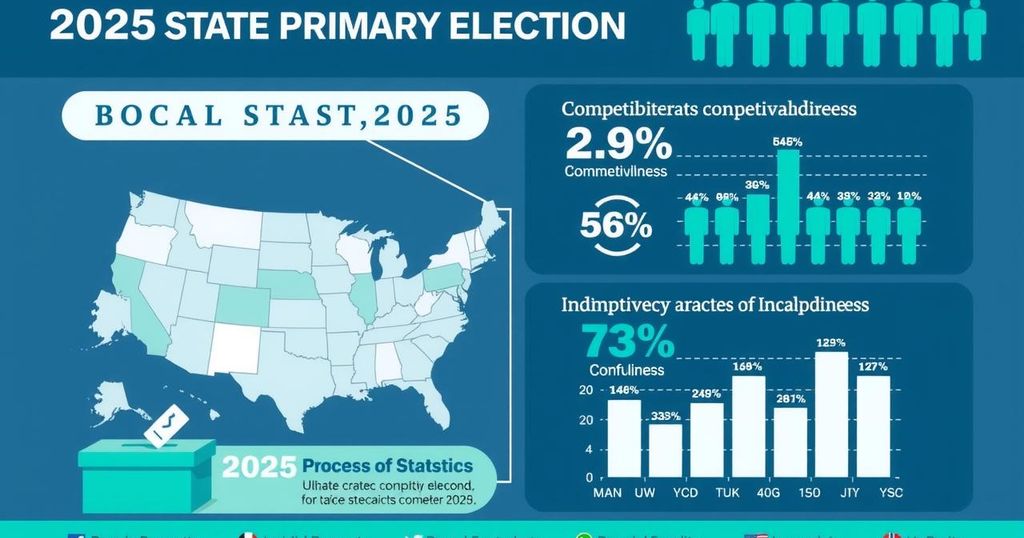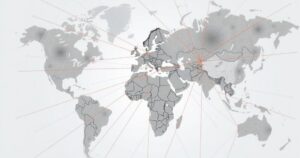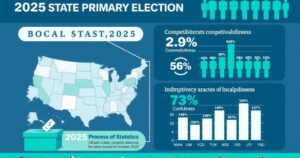Reviewing Competitiveness in 2025 State Primary Elections

- The percentage of open seats in 2025 was the lowest since 2011.
- Only 51 primaries were held across three key states this year.
- Three Democratic incumbents lost in New Jersey’s legislative primaries.
- No state executive incumbents were defeated in the 2025 elections.
- Contested primaries were below the historical average for the last decade.
Open Seats and Contested Primaries Decline in 2025
The state primary elections in 2025 showcased unusually low competitiveness levels, as evidenced by a notable decline in the percentage of open seats. With only 5.9% of seats open, the current year has recorded the least amount of availability since 2011. Furthermore, data from Ballotpedia indicates that the percentage of contested primaries stands at 17.6%, which is markedly below the average of 19.7% reported from 2011 to 2023. Incumbency statistics reveal that 22.4% of incumbents faced contests this cycle, a slight increase from the previous average of 21.8% based on prior years’ elections.
Detailed Overview of Key State Primaries
Focusing on specific states, New Jersey, Virginia, and Wisconsin were at the forefront of this year’s state primaries. In New Jersey, voters cast their ballots for the governor and members of the General Assembly, while Virginia’s ballots included contests for governor, lieutenant governor, attorney general, and various seats in the House of Delegates. Wisconsin’s primaries featured a non-partisan race for the superintendent of public instruction. Across these three states, there were a total of 51 primaries held out of an available pool of 289 for the 185 positions open for election this cycle.
Incumbent Losses Highlight Year’s Dynamics
Interestingly, in the state executive primary elections this year, no incumbents were ousted, signifying a firm hold on power. However, New Jersey did experience losses among its state legislative representatives, with three Democratic incumbents failing to secure their seats. This represented 1.7% of the incumbents seeking re-election and 7.9% of those who were contested. This raised flags as it marked the third-lowest number of incumbents defeated in odd-year cycles since 2011, falling just short of 2017’s zero losses and 2013’s two.
In summary, the 2025 state primary elections illustrated a lack of competitiveness with notably low open seat percentages. Both the share of contested primaries and the percentage of incumbents challenged remained below historical averages. As such, this cycle saw very few incumbent defeats, particularly in the legislative races in New Jersey, raising questions about the political landscape moving forward.






